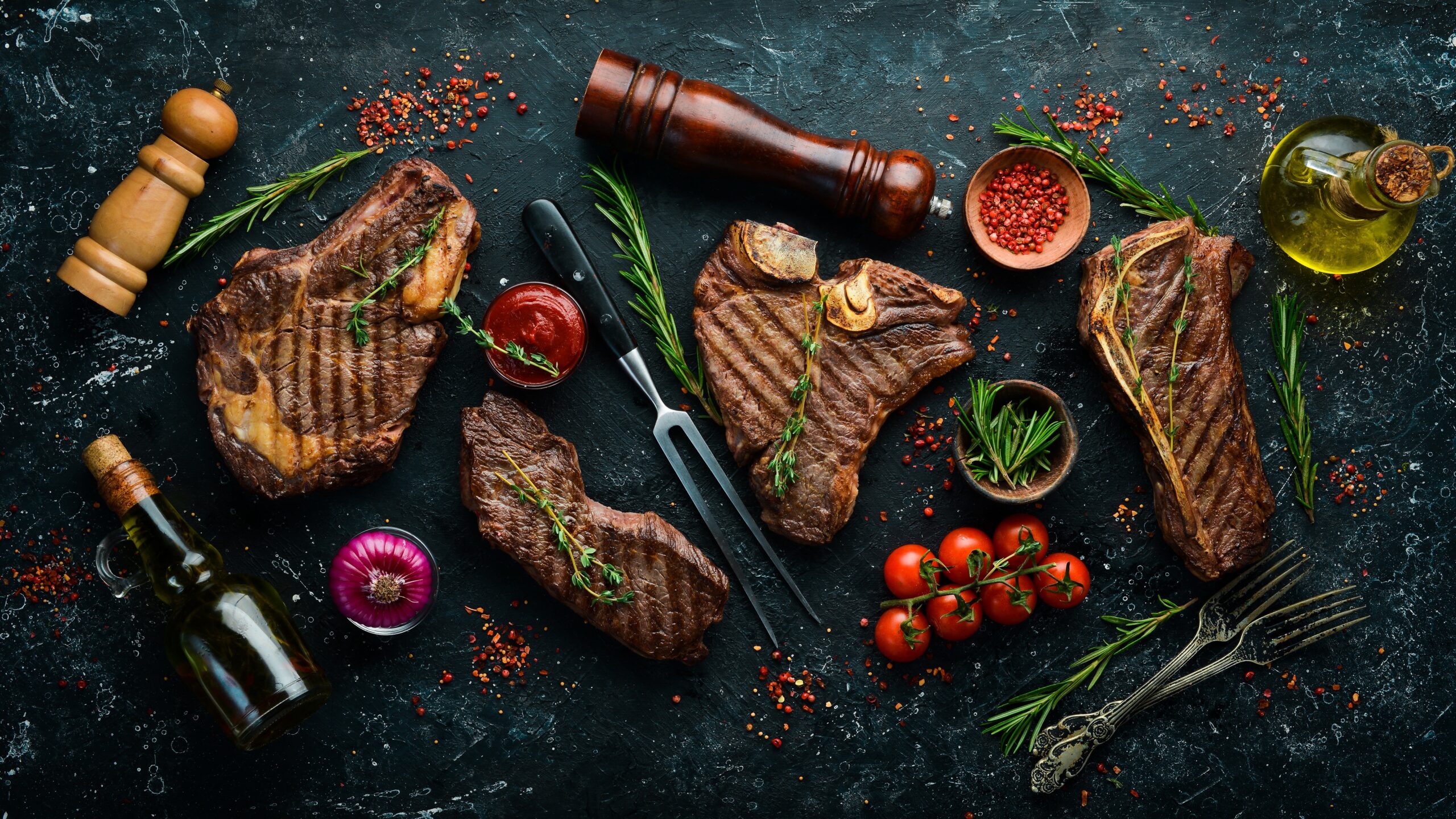As a consequence of our lacking antlers to sort matters out, man’s competitive nature can lead to all manner of attempted besting between friends. One popular method is over a flame. Not by wrestling on a bonfire, but by outdoing your pal in the cooking of man’s greatest culinary obsession: the steak.
The steak is the connoisseur’s meat dish; a subject of debate, delight and potential disappointment. To encourage the first two and avoid the last, we’ve consulted three prime-cut experts and one wine expert to produce a definitive instruction manual so that you, the antlerless man, can prevail in the battle of the beef.
Rib-eye
The rib-eye is the rising star of the steak world. As people have become more steak-conscious, this fatty, flavoursome cut has shot up the popularity charts.
“Our customers’ favourite cut,” says Richard Turner, head chef at London’s famous Hawksmoor steak restaurant. “The fat content gives it a lot of flavour. Cut it at least an inch thick and cook it a bit more than some steaks — medium or medium-rare — so it can absorb the fat. You don’t want fat with fat, so I’d suggest serving with a nice tomato salad. For a 250g steak, you’re looking at 4-6mins for medium-rare, 6-8mins for medium, although times are never precise.”

Fat is key to the rib-eye’s appeal. One of the fore-ribs, it usually has no bone in and no fat around it; instead, it is infused with the stuff. It’s an important factor when buying your steak, as Michael Gale, master butcher at Allens Of Mayfair (Allensofmayfair.co.uk), explains: “You want good marbling [little rivers of fat running through the meat],” he says. “And there’s a square of fat at one end. Make sure that’s large. Any steak except fillet should be more than 21 days old, but avoid anything older than 35 days
more on shortlist.com




